You don’t need us to tell you that the digital marketing ecosystem is changing — but perhaps nowhere is it more prevalent than in the realm of social media advertising.
For many years, brands could invest a few hundred dollars into Facebook ads with subpar creative and still deliver a stunning return on investment (ROI).
But, like dial-up internet and iPod nanos, those days are gone forever.
Unfortunately, we still encounter too many brands using this outdated mindset in attempts to grow their brand presence and online sales. Living off the expectations of old, they don’t understand how and why their results keep slipping, and so they turn to us for help.
Today, I’ll share with you what I share with them: my honest take on how your team should really be using social media advertising in 2025 to maximize your return — and set your brand up for future success, no matter what happens to social in the years to come.
Want our team to analyze your paid social strategy? Contact us anytime to request a free audit and proposal.
A (Brief) History of Social Media Advertising
In the past, almost every ad you ran on Facebook could deliver results, no matter how hyper-targeted the audience, basic the creative, or small the budget.
For example, you could serve any old ad on Facebook to a limited audience — and still get a return that justified doing so again and again.
It’s this approach that many of our prospective clients are using when they first come to Inflow for paid social services.
However, as ad competition on the platform has skyrocketed over the last few years, this outdated approach no longer works.
Throw in the limits on audience data caused by the 2021 iOS 14.5 update, as well as shortened reporting windows that make it harder than ever to prove results, and it’s no wonder so many brands spend months wasting their hard-earned marketing dollars before reaching out for help.
Bottom line: If you want to see significant results today, you have to be a lot smarter with your strategy.
And that’s where we come in.
How to Succeed at Paid Social Media in 2023
To continue scaling and delivering significant ROI with their accounts, brands need to turn their paid social approach on its head.
Here’s what we recommend, based on our decades of experience in this field:
1. Employ a full-funnel approach.
When most brands launch their social ad campaigns, they have one goal: generate a return that justifies their investment.
Unfortunately, advertising campaigns that focus solely on obtaining sales or leads have a short life expectancy. Once initial retargeting audiences are tapped out, there’s no one to generate new sales, frustrating marketers and wasting their investment.
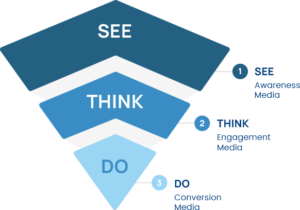
To create long-term, sustainable growth, your business needs to use a full-funnel strategy from the start. We call this the “See, Think, Do” model.
With a focus on building top-of-funnel audiences, you not only ensure a consistent retargeting list down the line but also develop valuable brand awareness. Sure, TOFU campaigns don’t deliver the tangible financial return that bottom-funnel campaigns do — but they are integral for feeding those bottom-funnel campaigns and keeping potential customers moving through the buying cycle.
More often than not, top-of-funnel campaigns are the missing piece in our eCommerce clients’ campaigns. Once they’re implemented, we quickly stabilize and scale their growth for results like a 70% increase in revenue and a 122% increase in return on ad spend (ROAS).
The video below is hosted on YouTube. If you need assistance with viewing the video, please contact info@goinflow.com.
2. Take advantage of Meta’s automation capabilities.
If you want to see success with your Facebook advertising campaigns, you have to learn to trust Meta’s automation systems.
There’s often an initial hesitancy from our clients when we suggest using Facebook’s algorithm to target audiences and optimize campaigns. They (understandably) worry about their valuable ad dollars being wasted with broader audiences, especially when they’re used to having such a tight rein on their campaigns.
But Meta’s algorithm is more intelligent than many give it credit for — and often knows your potential customers much better than you think!
Facebook has taken many steps to give advertisers the tools they need to help their campaign performance (and take the guesswork out of a post-iOS-14.5 advertising environment). With marketing tools like Advantage+ Audiences and tailored sales campaigns, Facebook’s AI can smartly apply the right social media ad format to the right customers across a broader, higher-potential audience.
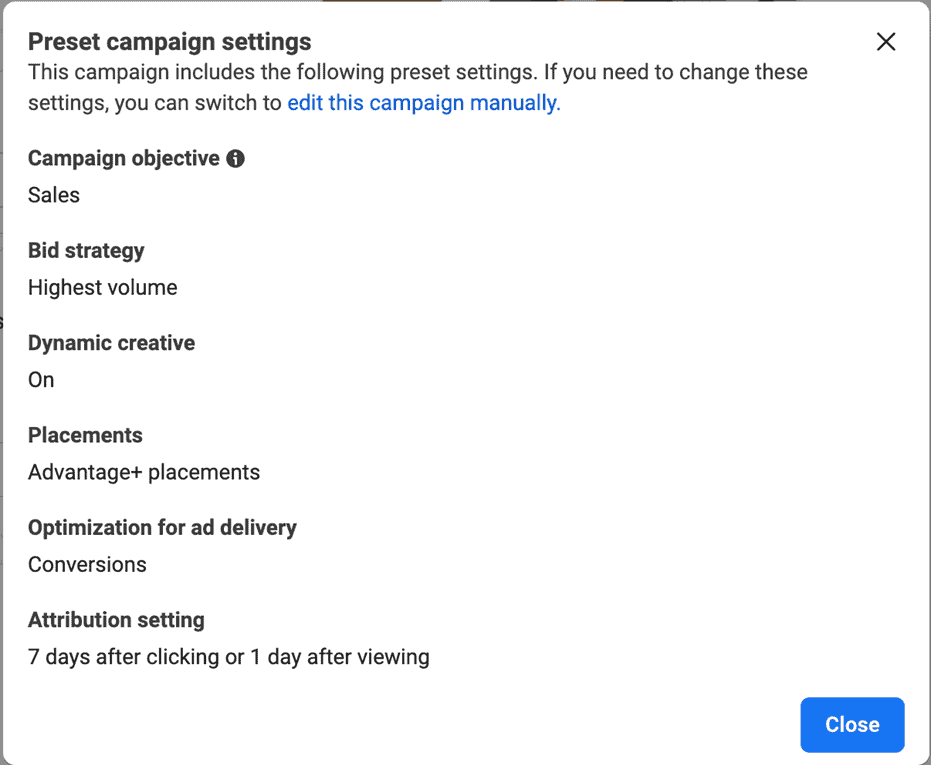
If social media content creation is an ongoing struggle for your team, you can even use Meta’s dynamic creative options to optimize your ad appearance and copy to your target customers — letting their robots do all the work and giving you time for more strategic analysis and reporting.
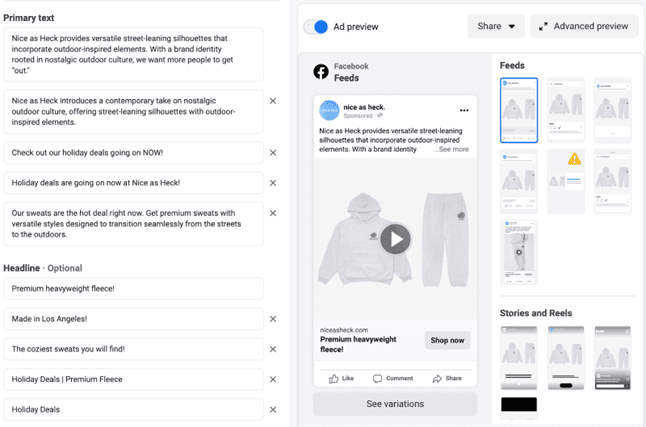
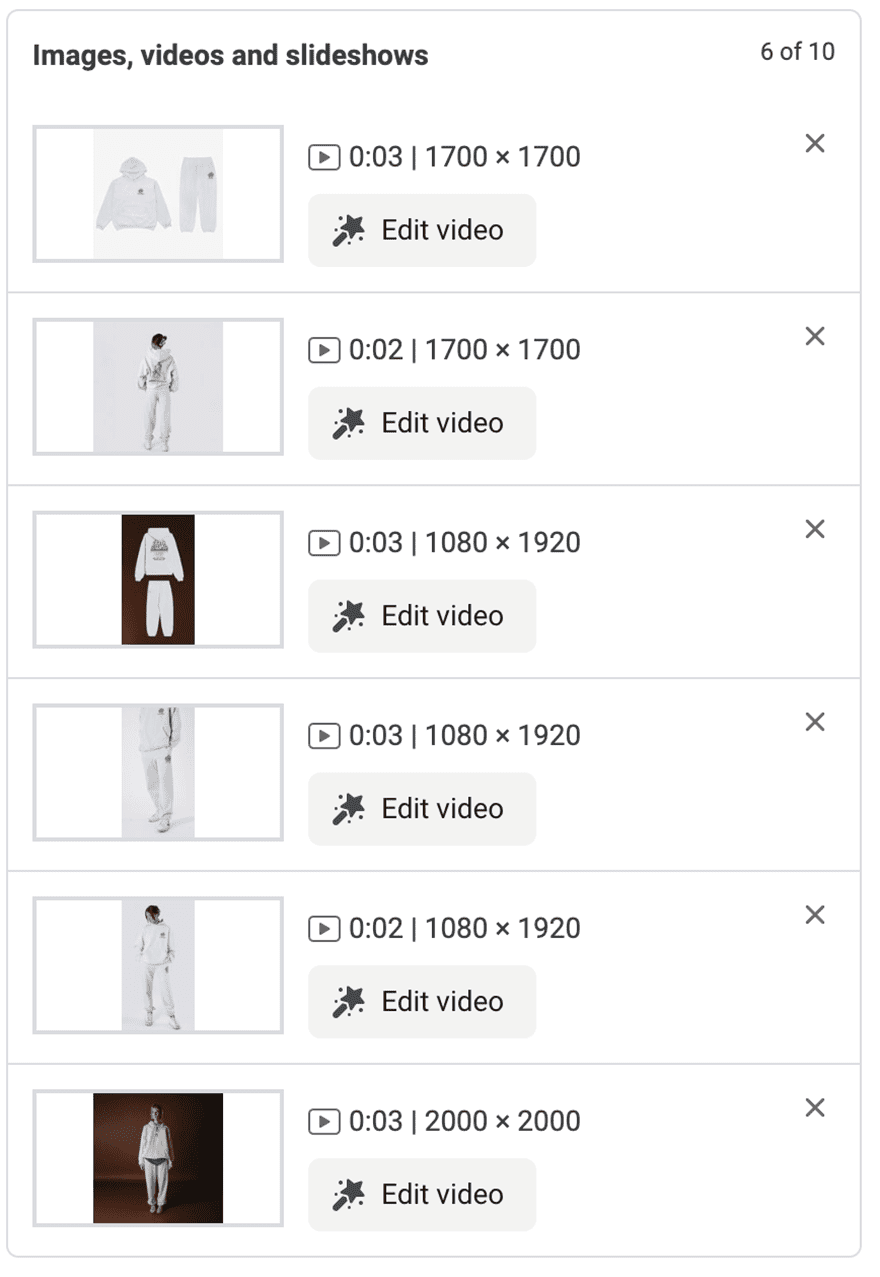
And, contrary to what average ad spend indicates, your brand can still use these tools effectively with a small budget, too!

There’s a reason why Meta’s automation is first on our list of recommended strategies. It’s a great option for both large and small businesses, working independently or with an agency, to deliver better results.
There is a caveat here: Meta’s automation is only as good as the data you feed it. Brands with smaller budgets and audience lists will see a longer learning period for their campaigns, while those brands with more flexible budgets will often ramp up significant results much faster.
You can enhance Meta’s learning capabilities by turning on your Conversions API, a form of server-side tracking that sends more event and audience data directly to Meta. We also recommend uploading as much first-party data as possible to speed up the learning period (more on that later in this guide).
Of course, like with any automation, don’t use a set-it-and-forget-it type approach. To get the absolute best returns, we recommend pairing this machine learning with an expert human marketer who can monitor performance and optimize as needed.
3. Prioritize your creative library.
While audience targeting and campaign budget are important, no factor plays a bigger role in your success than the kind of content you choose to run with your ads.
If your ads don’t grab your audience’s attention, they’re dead on arrival. Remember: Your creative is competing against fellow ad placements and organic posts in the crowded social feed. In many cases, your first impression may be the only one you get.
We consistently see campaigns succeed or fail based on the quality of the creative involved. If you want your campaigns to deliver a return, keep these tips in mind:
- Use several types of content. We recommend a mix of high-quality static images, carousels, short videos, and other media to improve engagement rates. The more visually appealing you can make them, the better.
- Employ cohesive branding. Your ads will build upon each other as they’re exposed to the same audience multiple times. A consistent appearance will enhance your brand awareness and user recognition.
- Consider influencer- and user-generated content (UGC). Social proof is one of the strongest weapons in your advertising arsenal. Make sure you’re strategic about the content creators you work with; you want your creative to feel authentic and resonate with your target audience.
- Refresh your creative often. The larger your library of image and video content, the more often you can serve fresh ads to your viewers. This prevents audience fatigue, which leads to stagnating results.
Need help building a library of quality content? Contact Inflow to learn more about our High-Impact Ad Creative offerings.
4. Use blended metrics as your one source of truth.
With a renewed focus on user privacy, platforms like Google Ads are giving less data to marketers. Combine that with the delayed attribution and limited reporting offered by in-platform dashboards, and brands relying on basic, automated reports no longer get a full picture of their success.
That’s why, in today’s social media marketing environment, you need to use blended, omnichannel metrics to evaluate your performance.
As an example, our former client Tactipup’s target audience frequently traveled back and forth between paid social and paid search channels before making final purchases. We had to create a blended report to see how efforts on those channels affected each other’s success.
If we had looked solely at Facebook-attributed sales, we’d have been missing out on these crucial buyer insights.
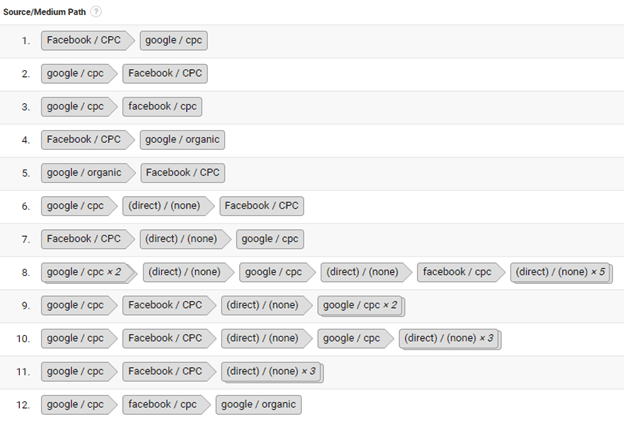
When it comes to creating a “single source of truth” for your reporting, we’re not just talking about sales. You’ll also need to consider how brand awareness raised through social media advertising could affect your on-site conversions.
Our clients frequently see lifts in website conversion rates in correlation with our social media campaigns, meaning our efforts are working even if Facebook-attributed sales are down. However, without reviewing a client’s internal metrics on revenue and sales, those effects may have gone unnoticed — and frequently do among teams that only look at Meta’s reporting platform.
That’s why, if you want to invest in social media marketing (and justify that investment to your stakeholders), you’ll need a blended report to evaluate your true performance.
Need help creating an omnichannel reporting dashboard? Contact our team to get started.
5. Diversify your platform portfolio.
Facebook used to be all an online business needed to succeed in the paid social realm. But, as audiences shrink and more advertisers saturate the platform, results will continue to diminish.
Our recommendation: Diversify your efforts to new and exciting social media channels like Pinterest, Reddit, LinkedIn, and more.
It seems like every day there’s a new social network gaming for your audience’s attention. By diversifying your advertising channels, you can meet them where they are (rather than stagnating on a platform losing engagement by the second).
Of course, advertising on channels like TikTok and Snapchat requires experimentation before jumping in headfirst. An experienced digital marketing agency can test the different platforms that hold the most potential for your business, without wasting your valuable ad spend on dead-end opportunities.
Your business’s ideal media mix will vary based on your audience demographics, their buying journey, your business goals, and more. But, by getting ahead of the crowd and investing in channels like programmatic advertising now, you’ll avoid spending your money on tapped-out audiences and social media platforms with diminishing returns.
6. Invest in first-party data.
While shrinking third-party data is a hindrance to proper social ad targeting, there is a solution: beefing up your own first-party audience data.
Not only is good, clean, first-party data a stellar insight into your target demographic and their buying behaviors, but it’s also data that platforms can’t take away from you. It’s your brand’s property, to analyze and deploy as you wish in the months and years to come.
First-party data (like email lists) is also the missing piece to creating successful lookalike audiences. If you have substantial amounts of this data, you can still create marketing campaigns around these audiences and expect to see pre-iOS-14.5 results.
You can collect first-party data through:
- Your email subscriber list
- Account signups
- Chatbot flows
- Progressive form fills
- Loyalty programs
- Third-party tracking platforms
Note: Whether you’re using first-party data for your social campaigns, email marketing, SMS campaigns, or other efforts, make sure that your brand messaging remains consistent — to provide the best advertising experience possible for your customers.
7. Consider other marketing channels.
Today’s customers are omnichannel beings. They become aware of products, research them, and purchase them across many platforms, including organic search, social media feeds, Google Ads, and more.
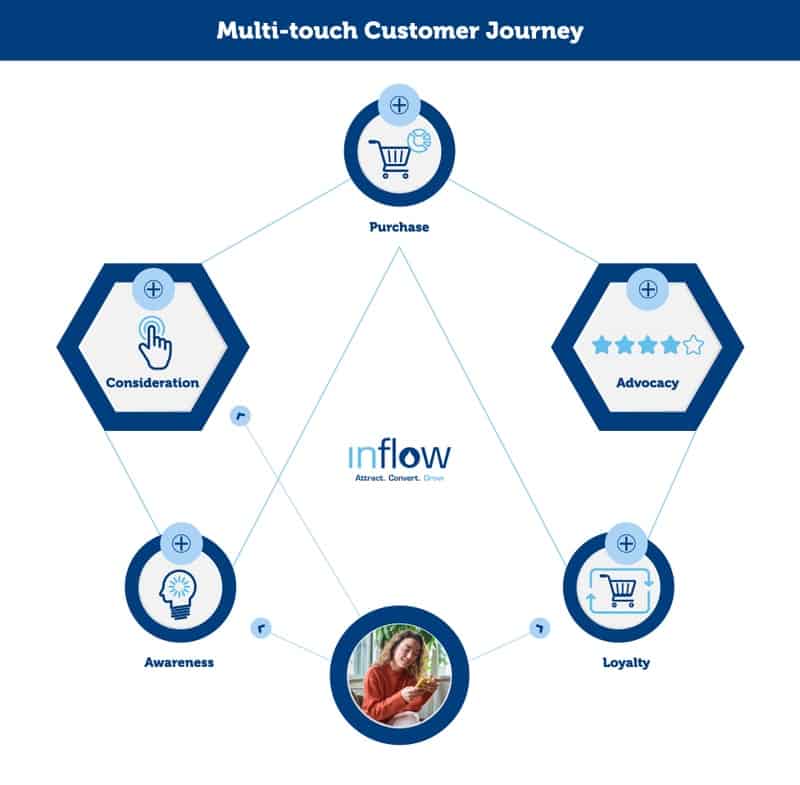
To target those audiences where they currently are, you’ll need to expand your reach beyond paid social media alone.
Strategies like search engine optimization are crucial for driving traffic and new customers to your site in the first place, allowing you to gather more first-party data which you can later use for paid social targeting. Sure, SEO isn’t as “flashy” as paid social when it comes to results — but, when done well, the return is well worth it.
We recommend working with an expert (like our agency) to determine which marketing channels will deliver the best results for your brand. Then, you can work together to create an omnichannel strategy that keeps your ideal customers moving through every stage of the funnel — an approach in which social media marketing remains integral.
Building a Paid Social Media Strategy for 2025 and Beyond
Remember that adage about the definition of insanity — doing the same thing over and over again and expecting different results?
That’s where we’re at right now with social media advertising.
If you keep following the strategies you’ve used in years before, your campaigns will continue to underperform while your competitors race ahead.
In other words, it’s time for your team to revamp your approach.
The strategies for social media advertising presented in this guide are great starting points (and ones we recommend to any business struggling with its marketing efforts). Use them to outline your new social media marketing plan, and start experimenting today to see what works for your campaigns.
Of course, if you need help creating an effective social media marketing strategy that drives results, our team is always happy to help.
Get a free account audit and strategy proposal by contacting us below. We’ll be happy to craft a custom approach to help you get the most out of your social media advertising campaigns in the modern age.










0 Comments